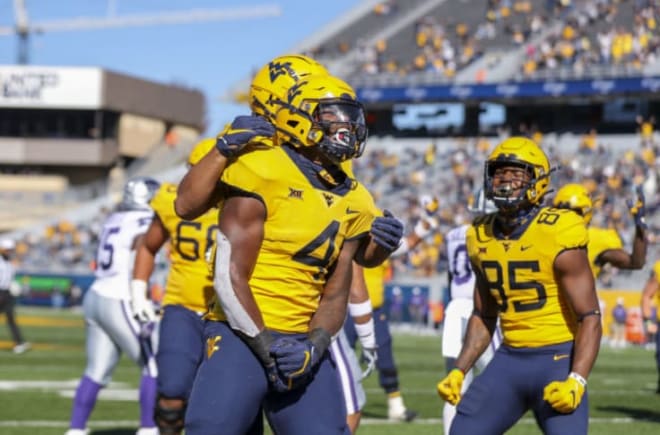West Virginia football sees jumps in two areas of emphasis

West Virginia came into the 2020 season with two major areas that needed to improve.
Those were the rushing game after an abysmal 2019 on that front and in the red zone. Each of those were an Achilles Heel for the Mountaineers on both sides of the ball.
Becoming more effective on the ground was the biggest concern after West Virginia mustered only 879 yards rushing in 2019 and a paltry 2.6 yards per carry.
The Mountaineers rushed for 73.2 yards per game over the course of a 12-game schedule. The numbers were almost unbelievable as it was the worst modern rushing attack in school history and finished with seven games with 51-yards or fewer.
“The major area we have to get better at is rushing the football. I think we have a good plan for that, time will tell,” head coach Neal Brown said.
Needless to say, things improved. The Mountaineers spent a significant amount of time focusing on simplifying things in the run game and the results were obvious despite playing two fewer games. Across the 10-game schedule, West Virginia rushed for 1,351 yards for an average of 3.8 per carry. While that still isn’t elite levels, it was over a full-yard better this past season.
The totals also finished at 135.1 yards per contest, almost double what it was in 2019. They also finished with 9 more runs of over 10+ yards despite the less games overall.
The red zone was the next concern and offensive coordinator Gerad Parker was brought into help in that department. Again, West Virginia struggled in 2019 finishing only 25 of their 34 trips, or 73-percent, into the twenties with a score.
But only 16 of those, or 47-percent, resulted in touchdowns. Even more alarming is a total of five of those touchdowns came against N.C. State, meaning that only 11 others were scored in the 11 other games across the 2019 schedule.
And like the rushing, things took a jump this past season. The Mountaineers scored in the red zone on 36 of their 41 trips, a scoring rate of 88-percent, and increased the touchdown percentage to 61-percent by scoring six points on 25 of those opportunities.
Things weren’t much better on the defensive side in the red zone in 2019, as the Mountaineers were rated 114th in red zone efficiency on the defensive side and it didn’t help that the defense didn’t force a single deep turnover in those instances. Opposing teams scored touchdowns on 30 of those 47 attempts.
Things jumped to 72nd in red zone efficiency in 2020 as West Virginia allowed only 12 touchdowns in 20 total attempts and only 17 scores overall. That means the Mountaineers cut those opportunities in half this past year and were stingier when it came to opponents putting the ball in the end zone.
Two key areas that the West Virginia coaches had circled coming into the season and both saw significant jumps from the previous year. But the work certainly isn’t finished on either category and now the challenge will be to make leaps yet again heading into the 2021 campaign.
That also is going include some new areas of emphasis too such as catching the football and creating more explosive plays all around. But if one year is any indication, this staff can generate improvement.
----------
• Talk about it with West Virginia fans on The Blue Lot.
• SUBSCRIBE today to stay up on the latest on Mountaineer sports and recruiting.
• Get all of our WVU videos on YouTube by subscribing to the WVSports.com Channel
• Follow us on Twitter: @WVSportsDotCom, @rivalskeenan, @JaredSerre
•Like us on Facebook

